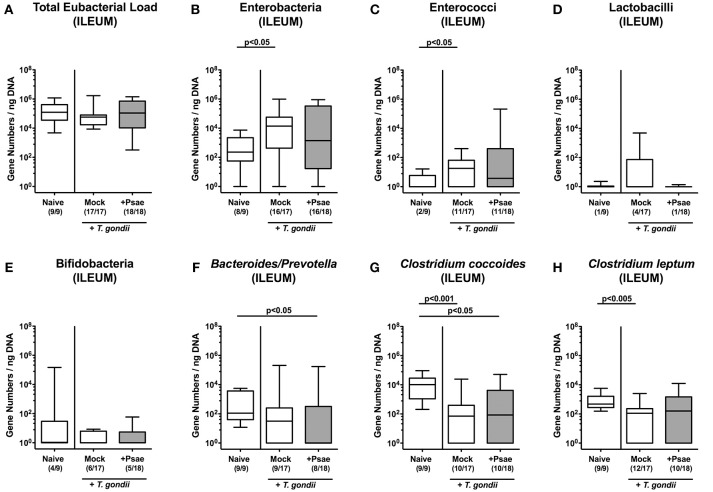Figure 2.
Ileal microbiota changes following MDR P. aeruginosa challenge of mice with a human gut microbiota suffering from subacute ileitis. Subacute ileitis was induced in mice harboring a human gut microbiota by peroral T. gondii infection on day (d) 0. At day 5 post ileitis induction mice were either perorally challenged with MDR P. aeruginosa (+Psae, dissolved in PBS) or with PBS alone (Mock). Uninfected mice with a human gut microbiota but without ileitis served as control animals (Naive). (A–H) The microbiota composition of the ileal lumen was determined 96 h later by quantitative Real-Time PCR amplifying bacterial 16S rRNA variable regions of the main intestinal bacterial groups (expressed as 16S rRNA gene numbers per ng DNA) including the total eubacterial load. Box plots represent the 75th and 25th percentiles of the median (black bar inside the boxes). Total range and significance levels determined by one-way ANOVA test followed by Tukey post-correction test for multiple comparisons are shown. Numbers of mice harboring respective bacterial groups in the ileal lumen out of the total numbers of analyzed animals are given in parentheses. Data were pooled from four independent experiments.

